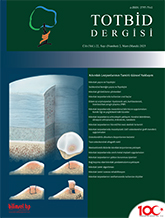
The two main components of joints, cartilage and bone, work together to carry out a mechanical task. While the cartilage serves as a bearing in the joint surface, the bone serves as a structural beam and a shock absorber. Any change in the mechanical characteristics of the tissues that are next to each other has an impact on them all. With growing interest has been shown in the realization that common joint pathologies like osteoarthritis are diseases of the osteochondral unit, which is formed by the cartilage underlying bone tissue, rather than just diseases of the cartilage. In addition to cartilage damage, there are structural changes such as osteophytes and bone cysts, and sclerotic changes in subchondral bone. These sclerotic changes and progressive cartilage destruction are considered to be symbols of osteoarthritis. The pathogenesis of other joint diseases, such as osteochondral defect or osteonecrosis, is being reconsidered. This includes the potential role of the subchondral bone plate in diagnosis, treatment, and prognosis.